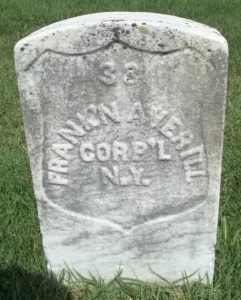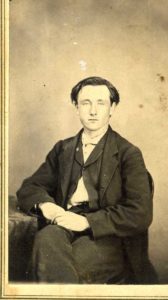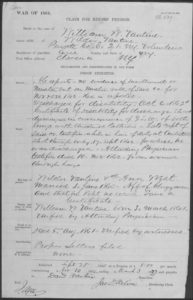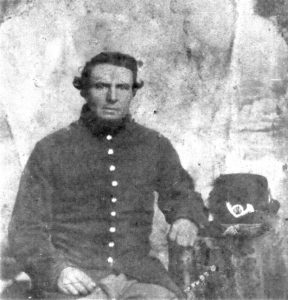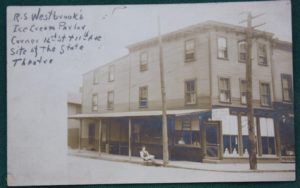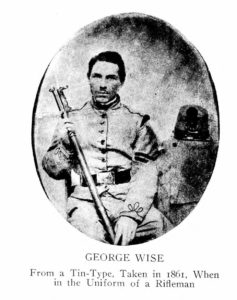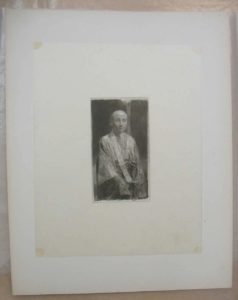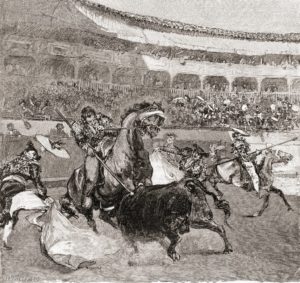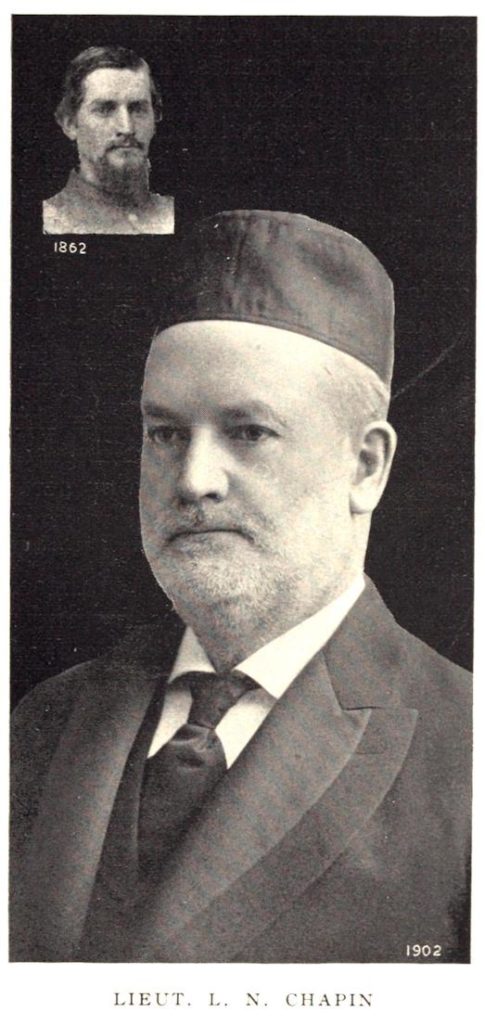Frank’n Averill, Corp’l, N.Y.
8 September 2022
Here’s the gravestone in Antietam National Cemetery for Corporal Franklin Averill of Company H, 21st New York Cavalry. The photograph was shared on his Findagrave memorial by prolific contributor Birdman.
Franklin was wounded at Antietam on 17 September 1862 while a Private in the 21st New York Infantry, but survived to enlist again, in the 21st Cavalry in 1863. That regiment was assigned to the Remount Camp at Cumberland, MD from late August through October 1864, and seem to have had a miserable time there. There were at least three deaths, two civil arrests, and 18 desertions among the men of the regiment during that period.
One of these was Franklin Averill, who was shot by the provost guard in Cumberland and died there on 23 September 1864. The town clerk in Colden, NY later wrote that he
was shot by a picket through carelessness or daring, have been unable to get any further particulars.
I, too, wish I knew more of that story.
Franklin’s remains were removed from Cumberland and reinterred in the new National Cemetery in Sharpsburg in about 1867.
Horace W Jones (c. 1860)
7 September 2022
This lovely carte-de-visite is of Horace W Jones, a 20 year old farmer in Wyoming County in Western New York State. About 2 years after he sat for that picture he was wounded in the leg at Antietam, then a Private in the 21st New York Infantry.
The photograph, an eBay find, was contributed to Horace’s Findagrave memorial by Ray Jackson.
The death of Wilder Van Tine (1862)
6 September 2022
This is the summary page from the pension file for 2 year old orphan William West Van Tine (1861-1928) of Clarence in Erie County, NY (touch the image to enlarge).
His mother Anna West Van Tine had died 5 months after his birth in 1861 and his father Private Wilder Van Tine of the 21st New York Infantry was mortally wounded at Antietam on 17 September 1862, dying at home that November.
The remaining pages in the file include affidavits about the details of Wilder’s wounding and death, his marriage in 1860, his son’s birth, and Anna’s untimely death. They’re all online from fold3.
In 1865 young William was granted a pension of $8 per month to run until his 16th birthday in 1877, to be paid to his grandfather David Van Tine.
William H Boorman, 21st New York (1861, c. 1900)
5 September 2022
Here are a uniformed Private William Henry Boorman of the 21st New York Infantry, who survived a wound to the chest at Antietam, and post-war a picture of him, both kindly shared online by Ruth Alice Anderson.
Velocipede (c. 1869)
5 September 2022
In January 1869 Antietam survivor Joshua G Towne, late of the 21st New York Infantry, was noted by the Milwaukee (WI) Sentinel for being the first to ride a velocipede – an early bicycle – on the streets of that city.
His story and that picture are from Gant & Hoffman’s Wheel Fever: How Wisconsin Became a Great Bicycling State (2013) from the Wisconsin Historical Society. The velocipede is from the Budget Bicycle Center in Madison, WI and was photographed by Joel Heiman.
R S Westbrook Ice Cream, Altoona, PA (1907)
3 September 2022
This post card depicting Robert Simpson Westbrook‘s place in Altoona, PA recently sold on eBay. It is likely that’s old Bob himself in the rocker out front.
Westbrook was an Antietam veteran who wrote the History of the 49th Pennsylvania Volunteers (1898). That volume is now online among many other Regimentals in the Antietam Institute’s Historical Research Center.
Corporal George Wise, 17th Virginia (1861)
3 September 2022
Sharpsburg veteran George Wise of Alexandria, VA published his History of the Seventeenth Virginia Infantry, C.S.A. in 1870, probably based on his wartime diary, and the more ambitious Campaigns and Battles of the Army of Northern Virginia in 1916.
His photograph is from his second book, and both volumes are online from the Internet Archive.
John Henry Ellsworth Whitney, Sergeant, Company B, 9th New York Infantry was seriously wounded in the pelvis during his regiment’s assault toward Sharpsburg on the afternoon of 17 September 1862, and was discharged, disabled, from a Frederick, MD hospital the following June.
An artist known particularly for wood engraving, he was magazine illustrator after the war. Here are some examples of his work from the 1880s. The first two, from the collection of the Brooklyn Museum, are a finely-depicted monk and a self-portrait, “Artist at his Desk.”
He engraved this bullfight scene in 1880 and it was published in the Century Magazine in November 1883 (via GoogleBooks). This copy is online from Meisterdrucke Fine Art Prints in Villach, Austria. The original subject was drawn by Robert Frederick Blum (1857-1903).
Regimental historian L.N. Chapin, 34th New York (1862, 1902)
31 August 2022
Louis Nathan Chapin was a young printer before the war, survived combat at Antietam in September 1862, was commissioned 2nd Lieutenant in December 1862, and mustered out with his Company in June 1863. He was a life-long newspaperman and publisher after the war.
He wrote and published a history of his regiment, the 34th New York Infantry – the Herkimer Regiment – in about 1903 on the occasion of the dedication of the monument to his regiment on the battlefield at Antietam.
His photograph here is from that volume, which is online from the Internet Archive.
21K milestone
30 August 2022
I’ve been spending more time than I used to with each soldier I enter into the database, so it’s taken almost two years to add the last thousand. There are now just over 21,000 people-pages on Antietam on the Web.
The latest additions are from the 5th Alabama Infantry, who suffered more than 150 casualties in Maryland, notably at Turner’s Gap on South Mountain on 14 September 1862, where most of three Companies were killed or captured.
